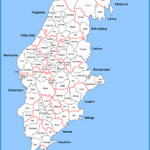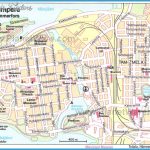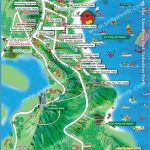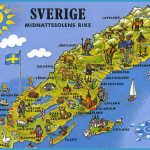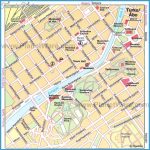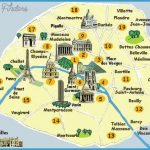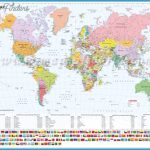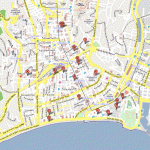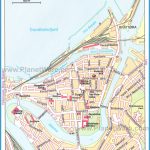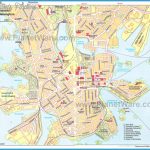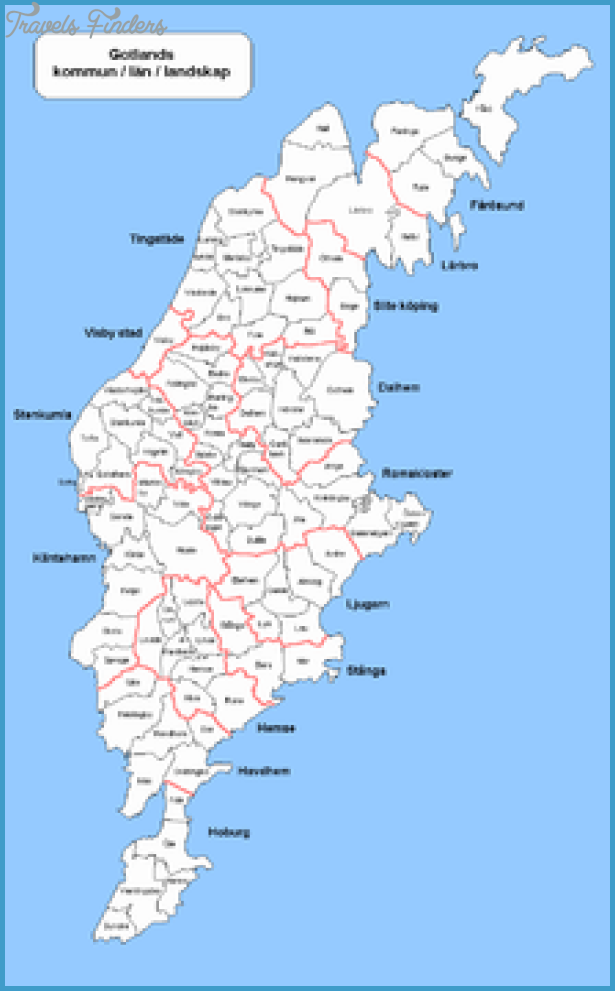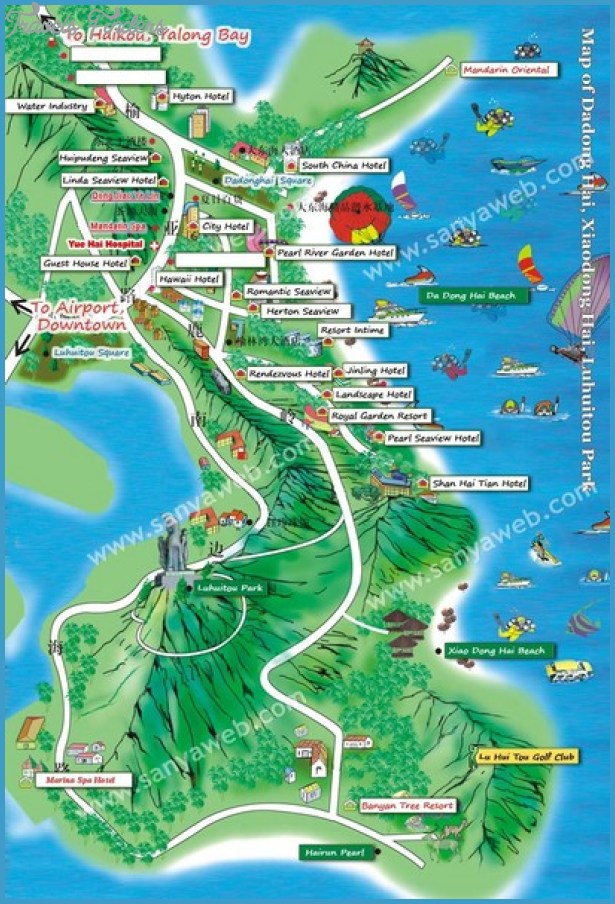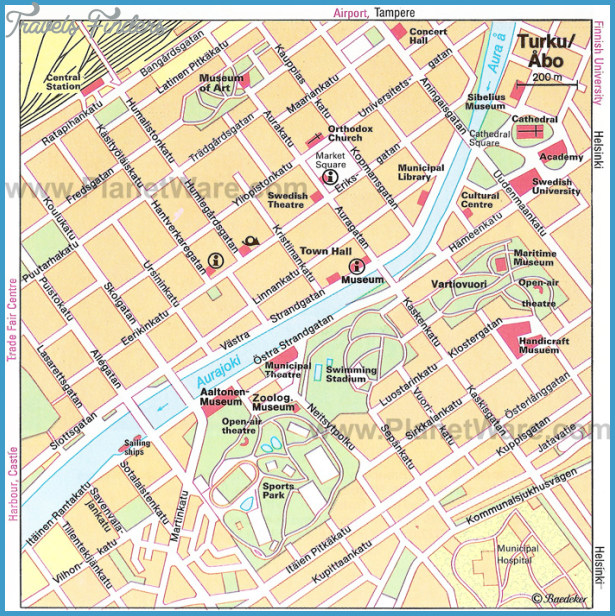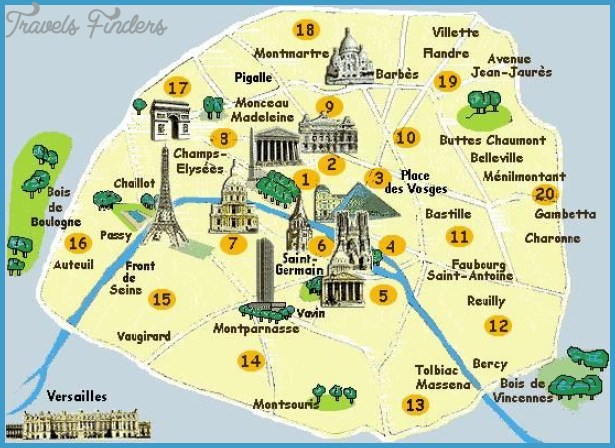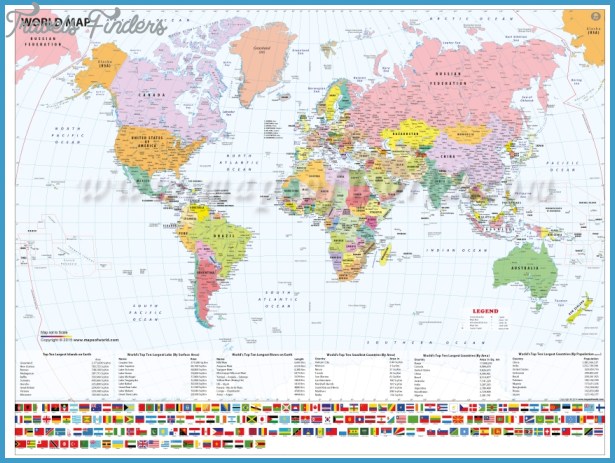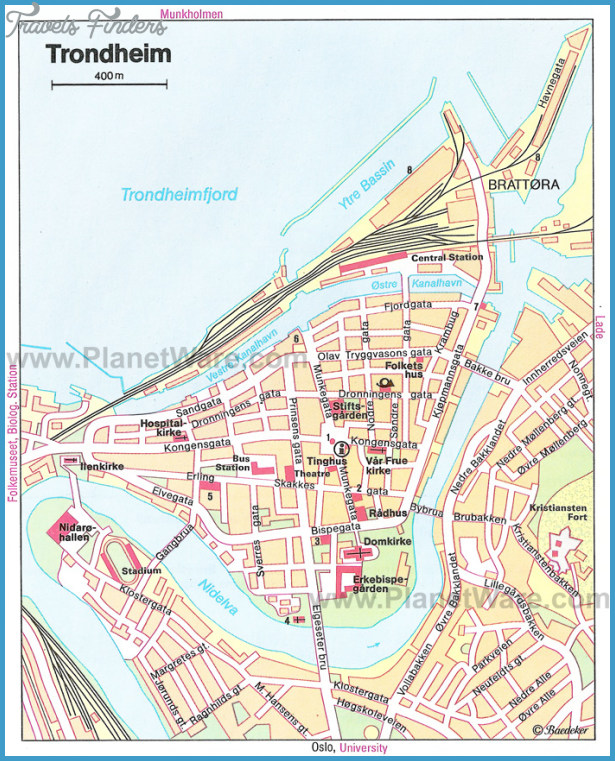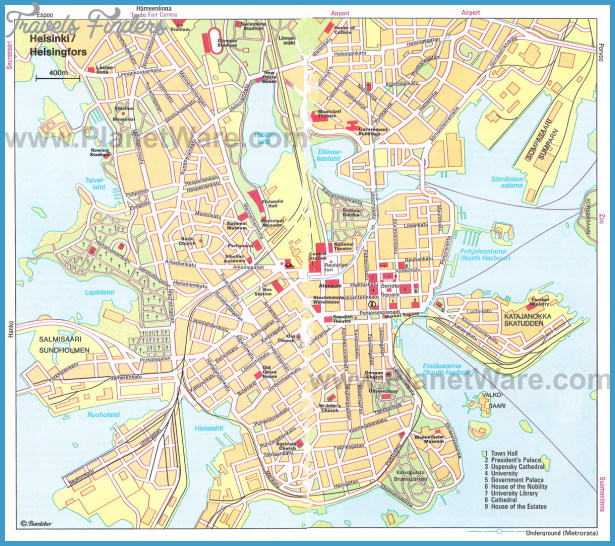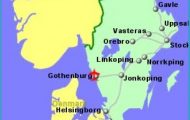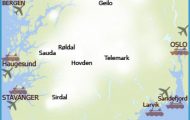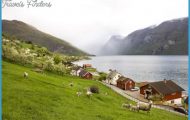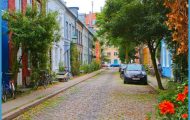EXCURSIONS. Remains of the past are to be seen everywhere on Gotland: no other part of Sweden has so many ancient monuments covering a wide range of periods, prehistoric and historical. The Gotland Tourist Agency (Gotlandsresor AB) runs numerous excursions during the summer to the island’s main features of interest. Gotland is also a paradise for the cyclist (with facilities for rental of bicycles), and the Tourist Agency offers cycling and cycling-camping packages.
Visby to Lickershamn (27 km 17 miles). Leave Visby on Road 149, via the Norderport. In 4 km (2imiles) a side road goes off to the resort of Snackgardsbad, and 6 km (4 miles) beyond this is the Herb Garden (KrusmyntargSrden), on the Bris-sund road (200 types of medicinal herbs). Another 4 km (2 miles) along Road 149, at Lummalunda, there is a stalactitic cave system which was discovered only in recent years. In the immediate neighbourhood are a wildlife park, a mink farm, the remains of an old iron foundry (closed down 1712) and a huge mill-wheel 10 m (33 ft) in diameter. Another 4 km (2 miles) N on Road 149 is Lummelunda church (late 13th restored 1960). 9 km (6 miles) beyond this lies the fishing port of Lickershamn (holiday village, 12 chalets). A narrow path 600 m (650 yds) long runs along the cliffs to the imposing rauk known as the Jomfru (Maiden), 115 m (38 ft) high (fine views).
Visby to Firosund (55 km 35 miles).
Leave by the Norderport and Road 148, which continues past the airport to Bro (1 2 km 7i miles), which has a church in Romanesque and Gothic style (early 13th c.) with a Baroque interior; bell (15th with an inscription in Low German. Built into the external wall are numerous stones with representations of animals and symbolic devices from an earlier church (perhaps 5th c.). 12 km (7i miles): Tingstade, on the NW shore of a lake, the Tingstade Trask (alt. 45 m 148 ft). The engineer and inventor Christoffer Polhem was born here in 1 661. Fine 13th church. Beneath the waters ofthe lake are the remains of a pile-built defensive structure of the Iron Age known as the Bulverk. 10 km (6 miles) beyond Tingstade Road 147 branches off on the right and comes in 9 km (5i miles) to the port and industrial town of Slite (Slite-badens Hotell, 38 Slite holiday village, 50 chalets), the heart of the Gotland cement industry. From the church (1960) there is an attractive view. Road 148 continues to Larbro (3 km 2 miles), which has a 14th c. church with an unusual octagonal tower; it contains numerous sculptures and paintings. Adjoining the church is a 12th c. defensive tower. 3 km (2 miles) NW are the ruins of Gann church (13th c.). From Larbro the road continues past Rute church (c. 1260) and through a military restricted area to Bunge (13 km 8 miles), with an early 14th c. fortified church richly
Raukar, Gotland decorated with sculpture and painting. To the E ofthe church is an open-air museum with some fifty old buildings. FSrosund,
2 km (H miles) beyond this, has a small harbour on the FSro Sound (1-5 km (1 mile) wide), which separates Gotland from the island of F&ro (ferry). FSro (Sheep Island) has a number of beautiful sandy beaches (Sudersandsvik, Ekevik, Norsta Auren) and large assemblages of rauker, in groups of up to 80 rocks 8-10 m high.
Visby to Roma and Dalhem (17 or 24 km 10 or 15 miles). Leave by the Soderport and Road 143, which runs past Follingbo church to Roma, with a church built about 1250. 2 km (1i miles) SE are the ruins of Roma monastery, a Cistercian house founded in 1164 which was pulled down after the Reformation and used as a quarry of building material for the nearby royal palace. 7 km (4J miles): Dalhem. Above the village stands a church of about 1250 (restored in the early 20th c.) which is one of the most interesting on Gotland and is notable in particualr for its wall paintings and stained glass. 300 m (328 yds) S of the church is the old railway station, now a Railway Museum.

